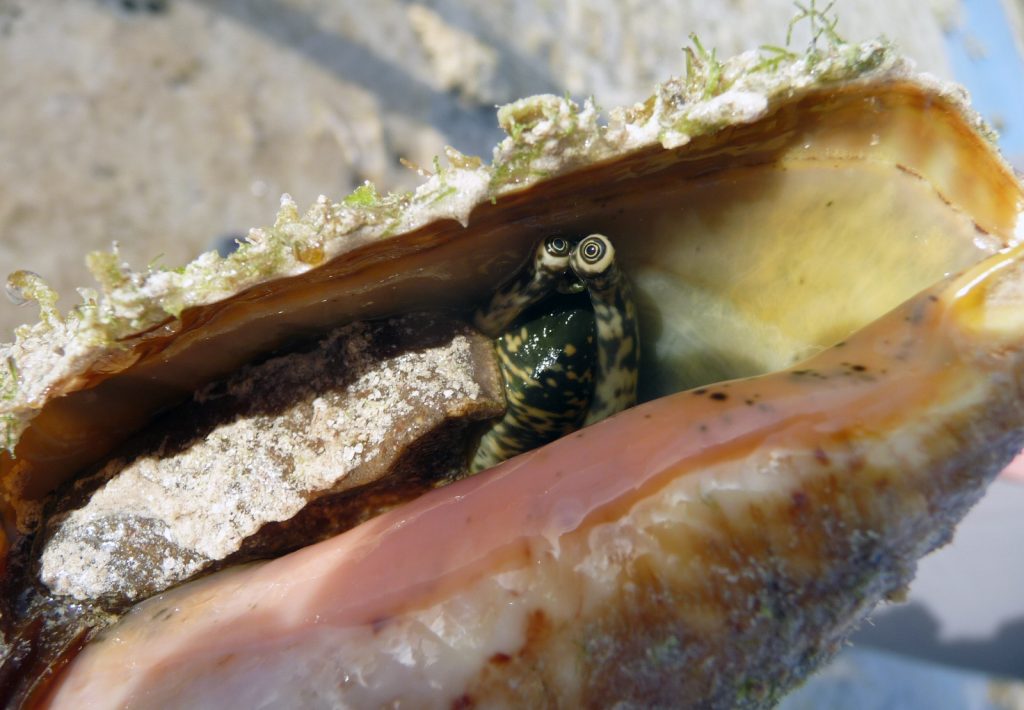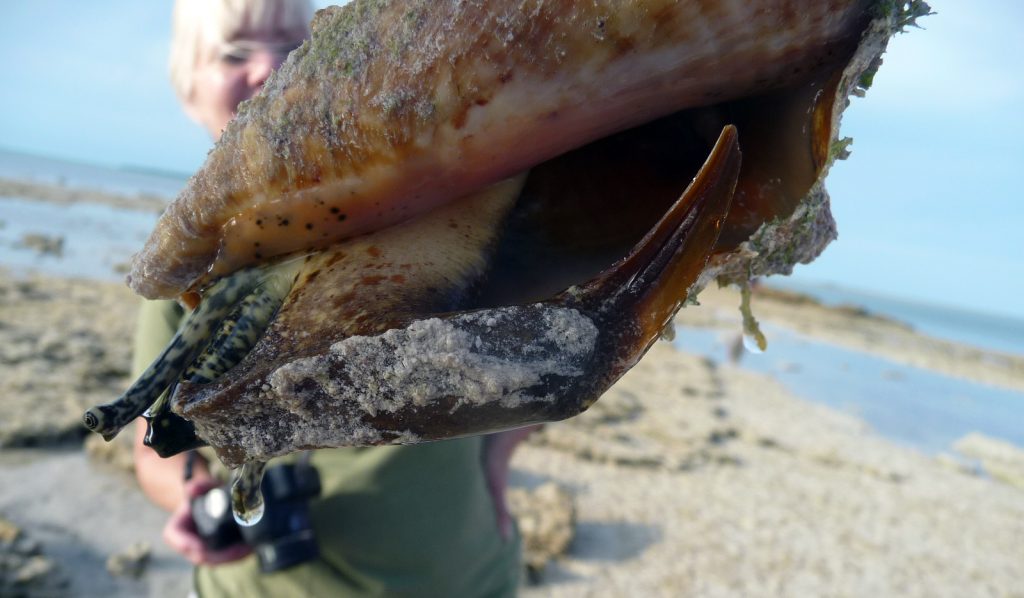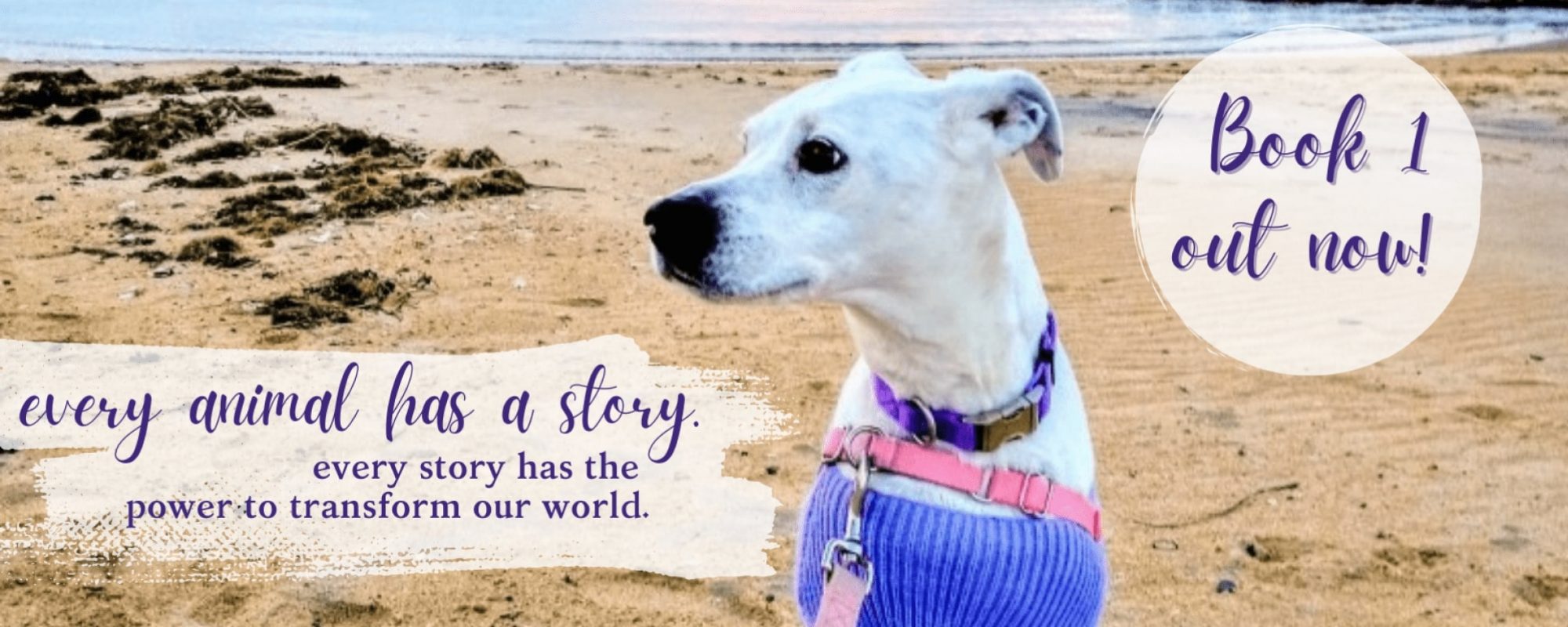You might recognize it as a trinket on a beach shop shelf. You pick it up, press it against your ear, and listen for the sound of the ocean. But I got to see inside.
Several years ago, I visited rural Andros Island, Bahamas, with a class for grad school. Our goal: to learn about geology through blue holes and mystical ooids. Between diving into those never-ending pits of water and marveling at endless fields of perfectly round, white sand, I noticed something else. Everywhere I looked were enormous piles of these shells, the former homes of the famous queen conch.
In the Bahamas, queen conchs are a hot commodity. According to locals, these enormous sea snails are collected from the water, and holes are drilled into their shells so that their fleshy bodies can be sucked out, prepared, and eaten. Shells are then discarded, hence those heaping piles. When I looked closely, I saw a chunk missing from each and every one.
Snails have fascinated me since childhood. I can pinpoint the magical moment when Langston Hughes’ words first danced across the pages in front of me: “Little snail, Dreaming you go. Weather and rose Is all you know. Weather and rose Is all you see, Drinking The dewdrop’s Mystery.” The poet captured the simplicity, the beauty, the surrealism of the snail’s world so perfectly. The world I longed to live in. My lifelong love of snails was henceforth cemented, so, naturally, I got a snail tattooed across my lower back years later in true just-turned-18 fashion.
And, naturally, I was delighted when a classmate stumbled upon a living queen conch during one of our beach escapades. As he extracted the pinkish shell from the shallow waters, I expected some sort of snail, but I never imagined these eyes.

Then, things got really weird. The longer said classmate held up this conch, the more agitated she appeared to become. Soon, her body, complete with a long, sharp brown claw, was dangling out of her protective housing.

Fortunately, this claw–known as an operculum–did not turn out to be a secret weapon that could amputate my classmate’s hand at any moment and free the creature from his grasp. (And, fortunately, my classmate got the hint and released Ms. Conch back into her habitat pretty quickly.) In most snails, the operculum is a hard structure that can be used to seal up the shell, protecting the mollusc’s soft body from desiccation. But in queen conchs, the operculum acts more like a foot, propelling these snails across the sand as if they’re pole-vaulting.
This conch, who flailed her eyes and operculum in response to our pestering, was clearly unsettled. Although snails and slugs have often been disregarded as mere slime on the pavement, slugs have been found to have a long-term memory of up to a month, while snails have learned in experiments to use a rod to electrically stimulate a part of their brain relating to sexual activity.
This particular snail, who vaulted off to see another day, may not have even reached sexual maturity, however, which occurs at age five in the queen conch. That may seem like a long developmental period for a simple gastropod, but the species has been estimated to have a maximum lifespan of 40 years.
If they’re lucky. In many countries, like the Bahamas, the harvesting of conchs has resulted in their serious decline, prompting CITES to regulate their trade, Colombia to ban their harvest during part of the year, and conservation groups to dedicate resources to their protection.
I don’t know about you, but the next time I see a plate of escargot, I’ll remember that fierce operculum and those whimsical eyes. Snails, to me, are simply what dreams are made of.


